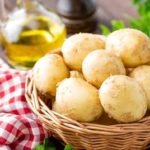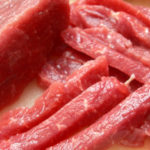Due to our country’s tropical monsoon climate, it is easy to grow a wide variety of vegetables and fruits, from high-end to everyday varieties. There are four specific types of vegetables that can be grown year-round, anywhere, and that cost only a few thousand VND per bundle. These vegetables are not only popular because of their affordability but also because they are considered “miracle” foods for long-term health, as they are packed with essential nutrients. Additionally, they are easy to grow and maintain, and are rarely damaged by pests or diseases, so they rarely require the use of pesticides or chemical plant protectors.
Amaranth
Amaranth includes red amaranth, green amaranth, and spiny amaranth. According to data from the National Institute of Nutrition, 100g of red amaranth contains up to 5.4mg of iron, which is four times more than the amount of iron found in beef, making it a valuable source of iron for people who need to improve their iron levels. This vegetable is also rich in vitamin A, which supports eye health, as well as vitamin K, which supports the circulatory system and prevents blood clotting problems, benefits the brain, and helps prevent aging.
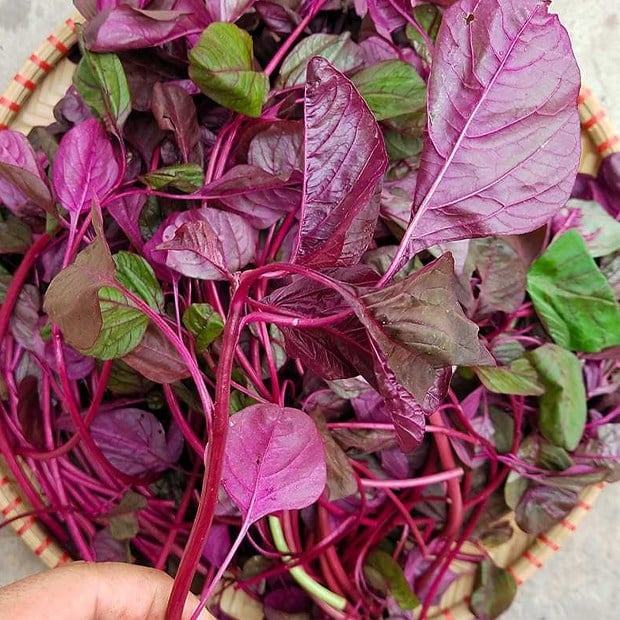
100g of red amaranth contains up to 5.4mg of iron, which is four times more than the amount of iron found in beef
In addition, amaranth is also rich in folate, vitamin B6, and potassium, which are nutrients that benefit the cardiovascular system, help regulate the heartbeat, and are a good choice for people who are on a diet.
Doctor Bui Dac Sang from the Hanoi Oriental Medicine Association points out that, in traditional medicine, amaranth is a rich source of fiber and other minerals, and is useful in supporting the treatment of diseases such as lipid disorders, promoting urination, and reducing inflammation. However, amaranth should not be consumed too often. In particular, people with gout or kidney stones should avoid eating amaranth because the high calcium and oxalate content can aggravate their condition. In addition, combining amaranth with luffa, jute, field crab… will help to enhance the flavor and nutritional value of the meal.
Jute
According to information from Dr. Huynh Tan Vu, lecturer in the Department of Traditional Medicine, University of Medicine and Pharmacy Hospital, Ho Chi Minh City, jute is a source of many essential nutrients for health, including sodium, lipids, potassium, fiber, carbohydrates, protein, calcium, and iron, along with a range of vitamins such as vitamins A, B6, B12, C, and D found in the leaves. These nutrients help to improve digestion, thanks to the addition of mucus and soluble fiber, and help to reduce symptoms of constipation.
Based on traditional medicine knowledge, jute is considered a cooling food with a slightly sour taste, is safe and non-toxic, and has benefits such as promoting urination, detoxifying the body, improving skin health, treating skin problems such as prickly heat and acne, supporting the treatment of anemia, and counteracting the symptoms of sunstroke. In addition, the use of jute juice can accelerate the healing of burn wounds, and dishes made from jute stewed with pork knuckle are also recommended as a method to support the treatment of aches and pains in the joints.

Jute is a source of many essential nutrients for health
Although jute is a food source rich in nutritional value, according to suggestions from Dr. Vu, it should be noted that this vegetable also contains a significant amount of oxalic acid and purines. Therefore, if consumed excessively, it can lead to the accumulation of calcium oxalate in the urine, increasing the risk of kidney stones. High uric acid levels can increase the likelihood of developing gout. Therefore, people who already suffer from conditions such as kidney stones or gout should consider reducing the amount of jute in their daily diet.
Jute, with its cooling properties and ability to reduce heat, helps to prevent constipation and is not suitable for people who are experiencing diarrhea or loose stools. Dr. Vu recommends that after cooking, jute should be consumed the same day and should not be stored overnight or reheated, as this can alter the quality of the vegetable and increase the risk of food poisoning.
Sweet Potato Leaves
Sweet potato leaves are a rich source of nutrients, including vitamins B, C, E, beta-carotene, biotin, as well as essential minerals such as magnesium, phosphorus, calcium, potassium, manganese, zinc, and copper…
According to information from the Clinical Nutrition Center of K Hospital, the strong antioxidant capacity of sweet potato leaves comes from components such as caffeoylquinic acid, quercetin, anthocyanins, and similar compounds. A study that involved giving 200g of purple sweet potato leaves to athletes every day for a period of 1 to 2 weeks showed a reduction in lipid and DNA oxidation, while increasing glutathione in the blood and improving antioxidant capacity in the plasma.
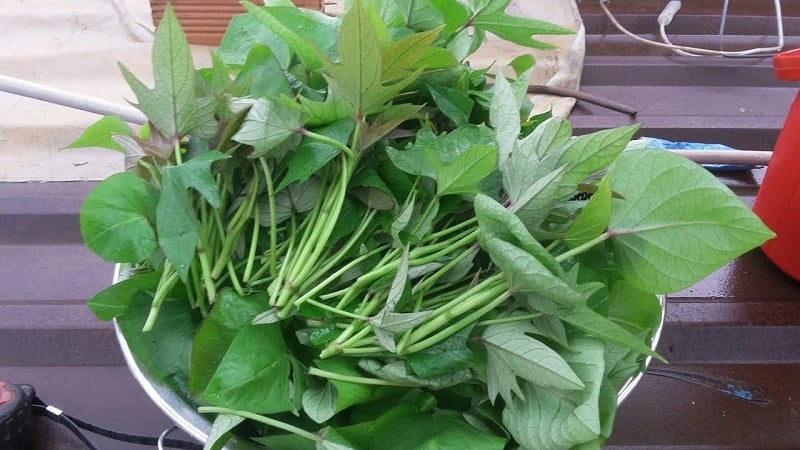
Sweet potato leaves are a rich source of nutrients
In Africa and Indonesia, sweet potato leaves are used in traditional medicine as a treatment for heart problems. Flavonoids and quercetin, two compounds found in sweet potato leaves, play a role in reducing the absorption of fatty acids in the intestine by regulating a variety of enzymes involved in lipid metabolism and affecting the expression of transcription factors involved in the synthesis of triglycerides and cholesterol.
Quercetin not only reduces pancreatic lipase activity but also blocks the absorption of cholesterol and triglycerides by inhibiting the specific transporters for cholesterol and fatty acids in the intestinal epithelium. Not only do sweet potato tubers benefit the treatment of constipation, but consuming sweet potato leaves also has a similar effect. Due to their high fiber content, sweet potato leaves help to soften stool, thus supporting the bowel movement. In addition, the resin in sweet potato leaves also helps to prevent and treat constipation.
Chives
This vegetable is known as the “longevity herb” in Japanese cuisine. In Vietnam, this vegetable is commonly used as a spice, and is popular in cooking due to its low calorie content and its richness in nutrients such as vitamins, minerals, and antioxidants. Chives are known to provide essential nutrients that are beneficial for improving sleep and strengthening bones. In addition, some scientific studies have also emphasized the ability of chives to combat the development of cancer cells thanks to the natural chemicals found in chives.
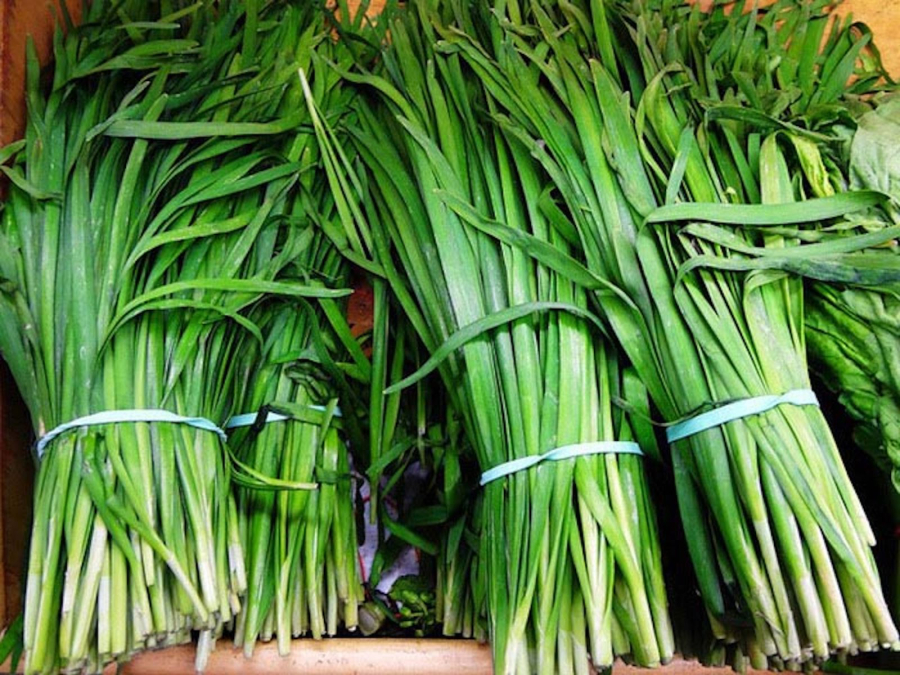
This vegetable is known as the “longevity herb” in Japanese cuisine
In traditional medicine, chives are believed to be warming in nature, becoming warmer when cooked, have a slightly spicy taste, and affect the Can, Vi, and Than meridians. Chives are said to have the ability to warm the middle, stimulate the circulation of qi, disperse stagnation, and have a detoxifying effect. It is often used in the treatment of symptoms such as chest pain, choking, and injuries from falls. The root of the chive plant, which is warm in nature and has a spicy flavor, is used to treat chest and stomach pain due to food stagnation, back pain, and itching symptoms. Chive seeds, which are warm in nature and have a sweet and spicy flavor, enter the Can and Than meridians, and are used to enhance the function of the Can and Than, strengthen male sexual health, and help to consolidate vital energy. They are also used in the treatment of problems such as incontinence, nocturnal emissions, seminal emission, and weakness in the back and knees.
Although chives are a rich source of nutrients, consuming too much of them at one time can cause digestive problems. To avoid this, you should limit your intake of chives to between 100 and 200 grams per meal.
You should also note that chives should not be combined with certain other foods such as buffalo meat, beef, or honey, as this combination can cause undesirable health effects. In addition, to prevent the risk of food poisoning, dishes made with chives should be consumed on the same day and should not be eaten if they have been left overnight.
Purslane
Purslane, though often found naturally along the edges of fields and is so inconspicuous that it is mistaken for a weed, is actually a plant with the scientific name Portulaca oleracea, and is widely cultivated and consumed around the world. This vegetable is
Expert Advice on How to Identify Unsafe Food
Are you aware of how to inspect food for possible safety risks? With the presence of food products from unclear origins and chemicals used as preservatives, it is important to be vigilant in selecting food items for our families. Join us in the Food Tips section to take a closer look at how to select safe and healthy food for our families!

























